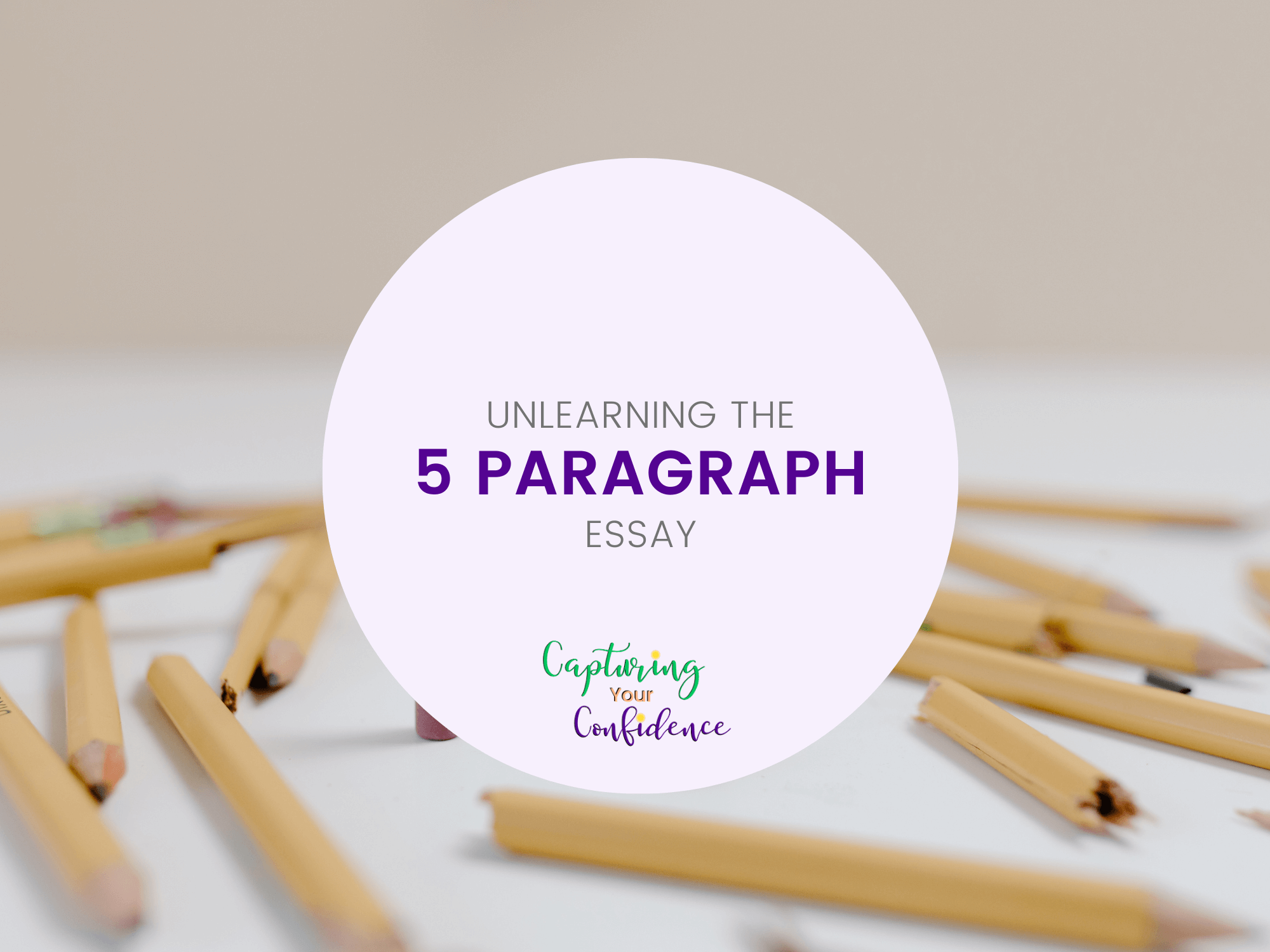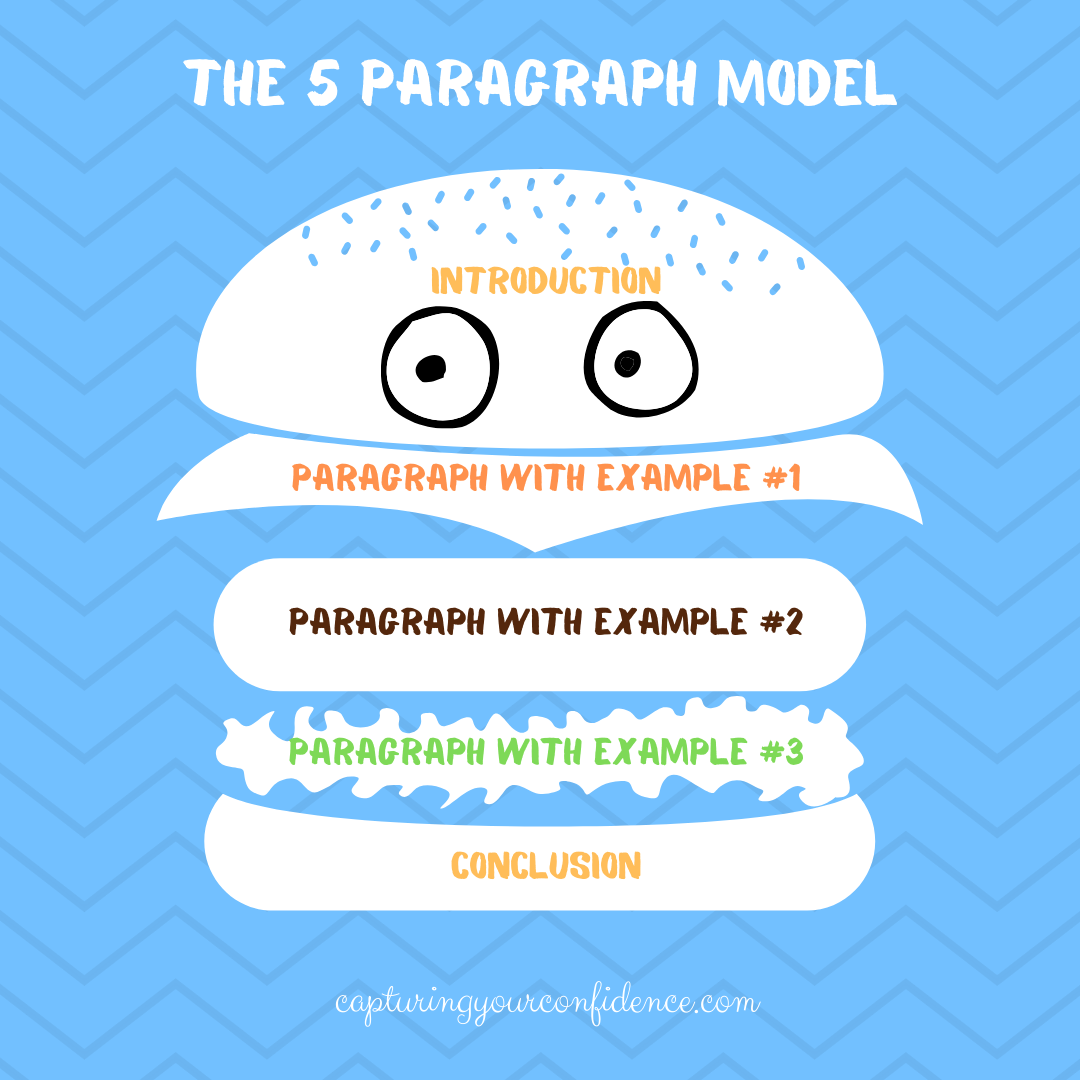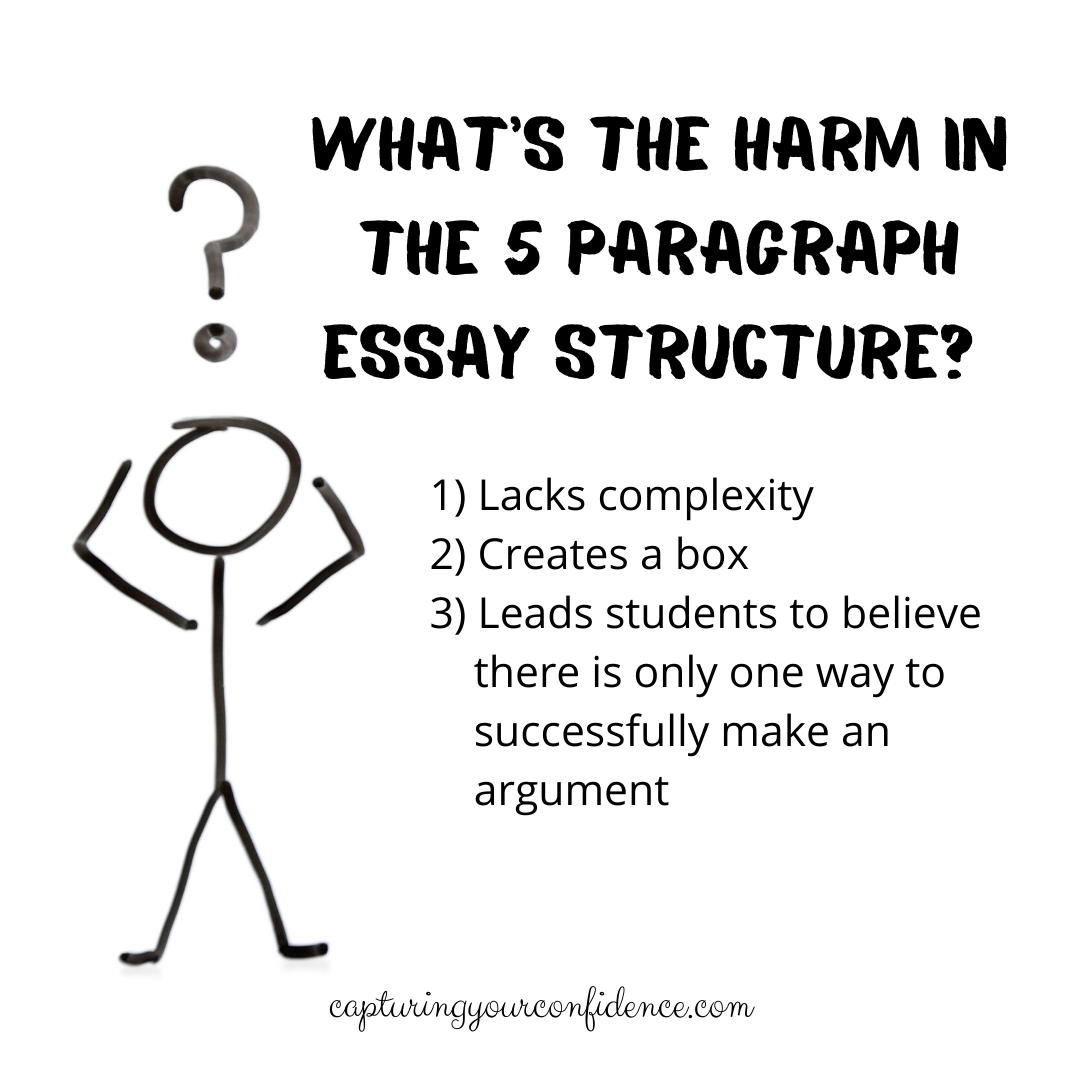Unlearning the 5 Paragraph Essay
Every semester around this time - research paper time - those of us in the college writing world fight the 5 paragraph essay battle. The one where we attempt to teach students that most writing, except standardized testing, doesn’t really use it.
Inevitably there are sighs. Shock. Annoyance that what they thought they knew about writing isn’t going to get them through this class (that many have been dreading).
What exactly is the 5 paragraph essay?
The 5 paragraph essay, as the name would suggest, is 5 specific paragraphs of text that serve specific functions.
The introduction introduces the broad topic and develops a thesis statement, or main point, that the writer will make using evidence and/or examples.
The body paragraphs each make one point or show one example illustrating their point. These paragraphs go in descending order of importance, with the first paragraph being the strongest point of support. The weakest support goes in the third (last) body paragraph.
Finally, the conclusion reminds the reader of the discussion throughout the rest of the essay. This includes a reminder of the introduction, a summary of the three supporting points, and a sentence denoting the end of the paper. Sometimes this can be a call to action for readers.
That doesn’t sound too bad, right?
What harm does it cause to have some structure in student writing?
Researcher and renowned scholar Les Perelman has spent years studying the effects of short timed writing, including the infamous 5 paragraph essay. He is even credited for being a driving force in making the writing portion of the SAT optional instead of mandatory.
It’s not about the structure, it’s about the content.
During his research, Dr. Perelman wrote 5 paragraph essay (read it here). You will notice, the paragraphs in the essay start as any essay might, but are full of commentary about the testing process.
Can you guess how the essay scored?
It got a perfect score.
In short, it’s not about the structure, it’s about the content.
Lacks Complexity 5 paragraph essay structure perpetuates the idea that everything we need to say for an argument can be contained in 5 paragraphs rather than the more complex writing college students do.
It also leads students to think that there are always three supporting points to any argument, and that they should always start with their strongest idea first.
This can be difficult to overcome in an entry level college English class where we write 6-10 page papers with required source material.
Creates a Box As you can imagine, students learn this style of writing early and for many years because of all the required standardized testing. I remember having to crank out those essays, too.
When students spend 12 years (or more) learning how to write a five paragraph essay, it can almost become a comfort zone. It’s as if when they get to the fifth paragraph, they can sigh in relief because they’ve made it. They have their argument, their three supporting points, and a conclusion.
When students write their paragraphs, it’s as if they’ve filled up their box, and finishing the conclusion closes the lid.
When students write their paragraphs, it’s as if they’ve filled up their box, and finishing the conclusion closes the lid. The problem being that, in college, we have much bigger boxes to fill (and we like to leave our lids open for further discussion).
Leads Students to Believe There Is Only One Way to Successfully Make an Argument Of course, all of these factors are intertwined. You can’t have a super complexly filled, or overflowing, box with a five paragraph essay.
Probably the most pernicious effect of the 5 paragraph essay format is that it leads students to believe that it is the only, or best, way to make a successful argument.
The bare bones idea can be helpful, especially for beginners who are easily overwhelmed by the enormity of writing and just learning the basics; however, this one way of argument isn’t always the best or most effective way, and it’s definitely not the only way.
How do we get students past the 5 paragraph essay?
The most common struggle I hear in entry level English is the length of our writing. “I can’t write 6 pages!” they exclaim. I’ve also heard statements like, “Well, I’ve made my point and there’s nothing else to say” after 2 pages out of a required 3 page writing assignment.
Upon discussion, this almost always stems from this five paragraph essay formatting. They’ve filled their box, or their paragraph quota, and they feel done.
Slowly At the community college I teach at, we have a pretty diverse student body, which includes both traditional age students and returning adult learners. Whether students were in high school last year, or 15 years ago, we always have to take it slowly to get out of the five paragraph mindset. Even in a four year university setting - maybe even more so - the five paragraph essay is prominent.
Each semester, we begin by thinking critically about other people’s ideas by reading and analyzing texts. Then we do some of our own research. Toward the end of the semester is where we start breaking out of that box and writing our research essays. They write a rough draft and get instructor feedback before turning in the biggest project of the semester: a 6-10 page essay (length requirement depends on the school).
Show them a Variety of Examples Personally, I always try to show a wide variety of voices in my class. My students are diverse, so the voices I show them should be too! But, as I’m thinking about the examples, I also purposefully show them work that’s different from the “standard” types of essays they’ve seen.
I show them almost exclusively student examples. All of them have done well, but none are perfect, which gives us good discussion in class. When we look at these examples, we talk about the areas that could have been better alongside the features that were successful. I tell them that any example I show them has room for improvement, but all of them would be acceptable models if they need help crafting their own papers.
Encourage them to Take Risks Outside their Comfort Zone There isn’t a lot of room to take risks on standardized testing essays, or really any graded essays where you turn it in for a huge part of your grade with no chance to revise. This makes writing VERY stressful for most students.
How can we expect students to learn how to write outside of their usual box if we don’t give them room to take risks and fail without tanking the grade they’ve worked toward all semester? I don’t think we can.
My college mandates revisions, but even when I was teaching at a four year university I gave students room to learn outside of their comfort zone by allowing & expecting revision. How can we expect students to learn how to write outside of their usual box if we don’t give them room to take risks and fail without tanking the grade they’ve worked toward all semester? I don’t think we can.
Give them Lots of Feedback Probably the hardest thing I do as an instructor to help students unlearn the five paragraph essay is to give them copious amounts of feedback. I say hard because it’s time consuming, and sometimes soul-sucking when you get a final draft back that’s the exact same as the first draft that didn’t do so hot.
This is probably one of the most critical things I do, though, because the students who are invested use that feedback to do real learning. They ask questions and truly try to make their writing better. Even students who aren’t interested or just don’t fix their mistakes have still see the possibilities of how they could improve for next time. At the end of the day, that’s the best I can give them.
But, in the long run, we college English instructors spend a lot of time unlearning this model because it’s simple, limiting, and just overall not what they need for college level writing.
I understand the value of teaching students the five paragraph essay format when they are young and just starting out. After all, they have to get past all that testing to even get to my classroom.
But, in the long run, we college English instructors spend a lot of time unlearning this model because it’s simple, limiting, and just overall not what they need for college level writing.
If you are a teacher, what have your experiences been with the five paragraph essay?
If you are a student, how has the five paragraph essay played a role in your education?
I’d love to hear from you! Drop a comment below or send me an email at rachel@capturingyourconfidence.com.




